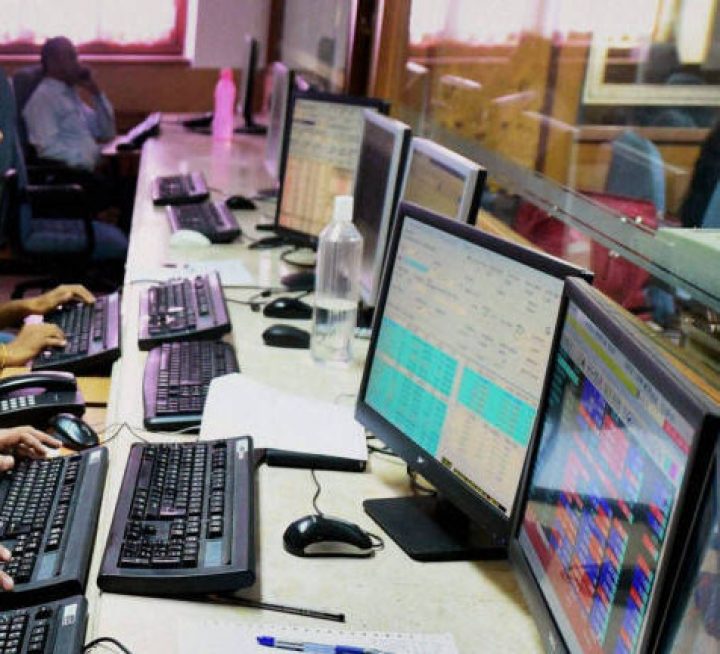
Top 5 wealth creating ideas for next 2-3 years
After a setback from Union Budget 2018, the domestic market has shifted focus into the global volatility which is turning cautious due to premium valuation, increase in interest rate and risk of de-globalisation.
India has gone into a double whammy under the domestic and global headwinds. After a setback from Union Budget 2018, the domestic market has shifted focus into the global volatility which is turning cautious due to premium valuation, increase in interest rate and risk of de-globalisation.
This trend may continue as valuation normalises and bond yield stabilise. For example, India’s government 10-years yield currently stands at 7.77, 49bps up in the last 2months.
Deposit and lending rates are increasing and trajectory of inflation continues to be on the higher side, which augurs further cut in valuation.
In the near-term, RBI is expected to provide additional liquidity to the bond market, which will provide some support to the market especial the financial sector.
The current effective Fed rate is 1.4 percent while the 10-years yield is 2.9 percent. If the US Fed rate is increased by 3times, the effective rate will be 2.15 percent by the end of Dec-2018, if the same spread is maintained the bond yield will increase to 3.65 percent.
The US bond yield has increased by 60bps in the last 3 month, bringing high volatility in the Indian market. Currently, the market is down by about 6 percent, if this situation continues in the global bond market, India will also be impacted.
What should be the right strategy for investors right now?
A) To churn your portfolio towards defensive sectors and reducing high beta stocks should be the key for retail investors. In the short-term, the market may have a positive bias and during which the investors should consider shifting the portfolio into low beta.
Profit booking on stocks with premium valuation and increasing in mutual funds debt are also advisable in the medium-term.
Given our moderate expectation on equity markets, we suggest starting with a holding of 40 percent for equity which can be increased to 70 percent over the long-term.
The focus should be more on Mutual Fund schemes predominantly with largecap exposure which investors can increase through diversified multicap funds.
Direct equity can be 10 to 15 percent of the total portfolio with a focus on defensive sectors. For the time being, high exposure is advised on mutual fund debt scheme at 60 percent with corporate accrual funds.
HCL Technologies
We continue to remain positive on HCL on a consolidated basis driven by traction in deal wins and strength in Mode 2 & 3 services (focus on next-gen offerings).
Aarti Industries
AARTI Industries Ltd (ARTO) is a global leader in Benzene based derivative products. The company has a diversified product portfolio with end users in pharma, agrochemicals, specialty polymers, paints & pigments.
Torrent Pharma
Torrent’s acquisition of branded formulations business of Unichem Laboratories will strengthen its presence in the domestic market with expansion in the chronic portfolio, improved market share and widening distribution networks.
Idea Cellular
Idea’s focus on the Vodafone merger and accelerating synergistic benefits both in terms of operating cost and capex is expected to achieve a higher level of efficiency going ahead.
The merger process is likely to be completed by H1CY18, we expect synergies to start accruing from FY20E leading to an expansion in EBITDA margin to 28.4 percent in FY20E.
Tata Global Beverages
Tata Global Beverages (TGB), an integrated natural beverage company derives ~70 percent of revenue from branded tea business and ~60 percent of the revenue comes from markets outside India.
What will happen in the banking space given the fact that the cost of borrowing is inching higher. The RBI might keep rates on hold in its next policy but may raise rates in 2018?
A) Well, increase in the cost of borrowing and reduction in credit growth are two negative factors for the banking sector, during which valuation gets downgraded. As a result, the current year may be difficult for the sector to maintain a positive trend.
In terms of valuation, the price to book is currently at 2.3x for the banking sector, which is till at the higher side compared to a range of 2.5x to 1.5x in the last 3years.
Q) With Dollar gaining strength there is a higher possibility of rupee weakness. Which sectors are stocks likely to benefit the most? What is your target level for the currency?
A) Flight of foreign funds from the domestic market due to pick up in US economy and FEDs hawkish view on interest rate is adding pressure on INR. Back home, growth in Q3 GDP and signs of pick up in the manufacturing sector may keep INR to trade range bound.
We expect USDINR to trade between 65.80 & 64.00 in the near term. IT, pharma and export-oriented companies will be the largest beneficiary. An industry thump rule says that every 100 basis points change in rupee impacts the operating margins of IT companies by 30-50bps.
Source: moneycontrol.com
Categories: BSE Sensex, Free watch sharemarket news, free watch sharmarket news, Indian sharemarket news, Indian Stock exchange, Indian Stock Market, Indian Stock Pick, Mutual Funds, Primary Market, sharemarket top news, Stock Market
Sorry, comments are closed for this item.
